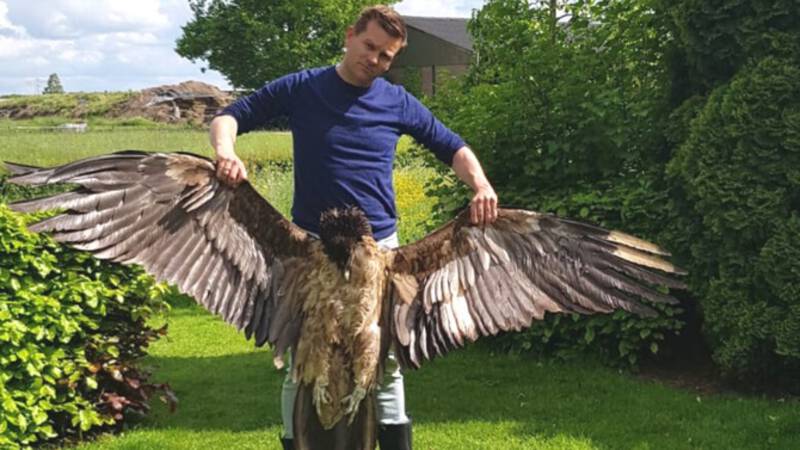The death of a bearded eagle that flew in a rotating windmill in Wieringermeer at the end of May could have been prevented by using an advanced bird detection system. This is evidenced by the answers of the outgoing Agriculture Minister Schotten to questions from Parliament.
The bearded vulture, one of the largest species of birds in Europe with a wingspan of about three meters, was killed on May 26. Found next to the turbines. Hans Polmann of Landscape Overijssel followed the bird via a transmitter from the moment it flew into Dutch airspace. He immediately noticed that something was wrong and rushed to the wind farm, where he found the lifeless animal.
50000 dead birds annually
The death of the bearded eagle raises questions. Says Waardenburg Consulting against NH News That about 50,000 birds die every year because they fly in wind turbines. So Pullman believes that all wind turbines should have a bird detection system. “In countries such as Portugal and Spain, but also in Zeeland, a system is used that ensures that the blades automatically stop rotating when a large bird is nearby,” he said in May. against NH News.
PvdD Vestering and Van Raan wanted to know from Secretary Schouten if she also believed that bird-detection systems could save lives and whether she was willing to ensure that all wind turbines were equipped with such a system and a blackened blade, which – called “bird strikes” and could Also prevent it.
“Dedicated to every park”
The minister acknowledges that the death of the bearded eagle in the Wieringermeer could have been prevented by the bird detection system, but stresses that such a system offers no guarantee.
Furthermore, it can only provide an estimate of system costs, in part because it requires “allocation to each park in all cases”. If the wind turbines are close enough to each other, one detection system will suffice. This costs between 20,000 and 35,000 euros. Schuten wrote, including maintenance costs of about 5,000 euros per year on average, the total costs for the entire life of the turbine(s) come to 100,000 euros per system.
The question was postponed whether it was ready to equip all turbines with bird detection systems. “Counties are the competent authority for new wind turbines to grant waivers, exemptions and permits under the Nature Conservation Act.”
Less green energy
Power companies are usually not a fan of bird detection systems. It is expensive to purchase and maintain. In addition, it costs production; Every time the bird detection system detects a bird flying toward the turbine, the giant must be stopped and therefore no power is produced.
In cases where Vestering and Van Raan suggest that production loss is still limited, the minister thinks otherwise: “If the system is set up so that most large birds are identified and their presence brings them to a standstill, there will be a significant reduction in production.”
Zeeland already has detection systems
“Almost every day, windmills are paused because there is a bird next to them,” Krammer wind farm in Zeeland has been operating with detection systems since 2019. Project manager Van Huet said last year. against Omrup Zeeland. This costs the park between 120,000 and 180,000 euros in annual income. Van Hut: “That’s a lot of money. But we’d like the birds, especially the great bald eagle, to keep flying here.”







